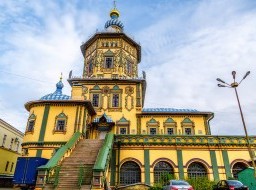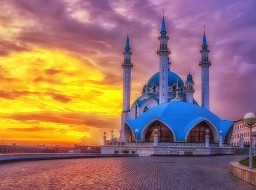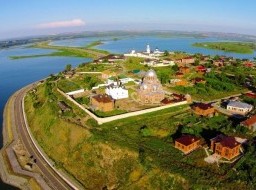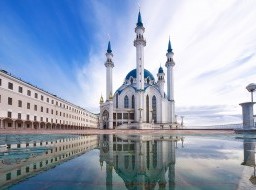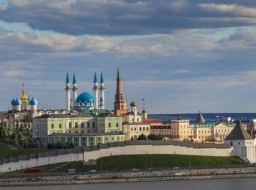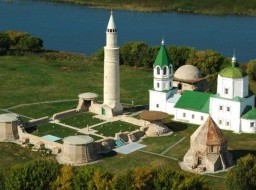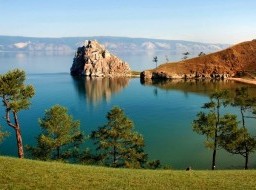Old Tatar Quarter (Staro-Tatarskaya Sloboda)
The Old Tatar Quarter (“Staro-Tatarskaya Sloboda”) is the soul of the historical part of Kazan. With its streets preserved from the medieval period, this is considered to be the main area of the Tatar city culture. Dozens of monuments have found refuge on the shores of Lake Kaban and Bulak ducts, in the heart of the capital of Tatarstan. The Old Tatar Quarter is spread over an area of 87.95 hectares, and you will find a total of 75 monuments of history and culture of the 18th – 20th centuries throughout it, which form the settlement itself. Among these are the houses of Yunusov-Apanaev, Shamil, Marjani, Kayum Nasyri, Shamil Yusupov and many others. The long list of masterpieces of architecture however should not deter you from simply enjoying the atmosphere of this historical place – there is much more to see than simply buildings. In the 19th century, an Oriental Club functioned in this settlement, where famous poets would read their works and some of the very first Tatar plays were staged. Mosques that were built here, are now known around the world - Apanaeva, Blue, Galeev, Burnaevskaya, and Sennaya (Nurulla) Mosques. Other places also decorate the settlement - a literary museum of Tatar poet Gabdulla Tukay, the house-museum of educator and scientist Kayum Nasyri, Tatar Academic Theatre named after Galiasgar Kamal and the “Tatarskaya Usadba” hotel and restaurant complex, which also includes a museum of Tatar life, a gallery of art crafts and a souvenir shop. And, of course some of the more modern places to visit here – for example the Chak-chak Museum (Tatar national delicacy) eagerly await visitors. Here, you can drink a cup of tea with oriental sweets and learn the secrets of ancient recipes of national dishes. Historical reference The settlement began to form in 1552, when Ivan the Terrible conquered Kazan. The Tsar evicted part of the Tatars living in the upper part of the city, to the shores of Lake Kaban. The new tenants of this area built merchant houses, mosques and madrassas (schools). They founded their own Maidannar (the word for ‘square’ in Tatar) and established the production of jewelry, headgear and household items. Life in the new area gradually began to improve, and over time this part of the city became one of the richest and most attractive. The 18th century monument - the Al-Mardjani Mosque (1767-1770), the first one to be built in stone at the expense of the worshippers as per the personal decree of Catherine II. This mosque has never closed its doors, even during tough political times. It is known that during the construction of the city, authorities were worried about the building: the height of the minaret frightened them. They wrote a denunciation to the Empress, but she simply replied: “I have designated them [Muslims] a place on Earth, so that they are free to rise to the sky at their discretion, because the sky does not enter my domain.” Since 1998, the Old Tatar Quarter has been considered a historical and cultural protected area of “Iske-Tatar bistese” with a special status and regime. |

